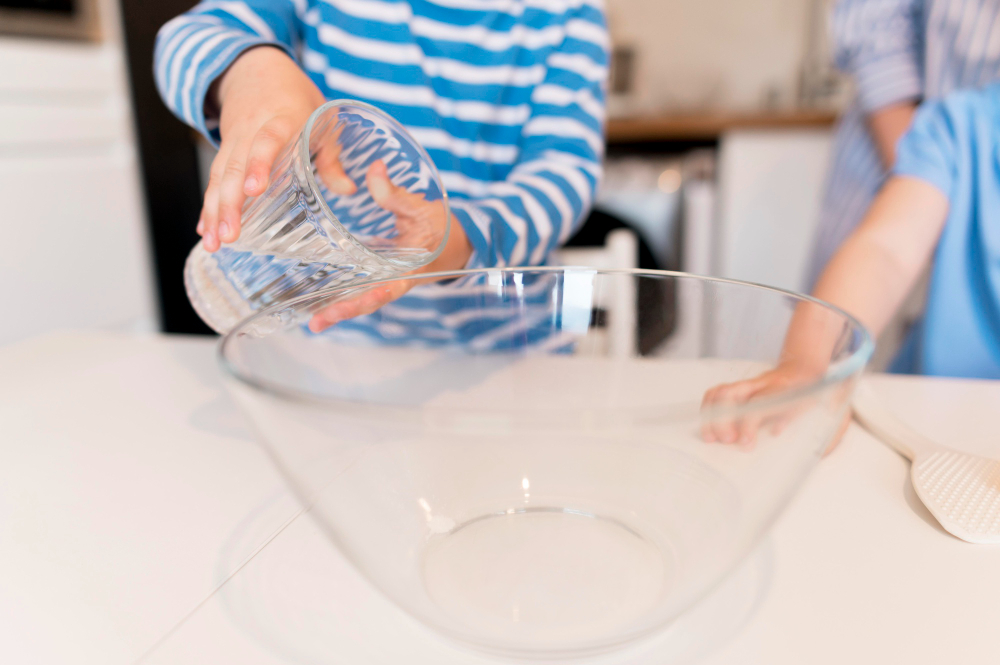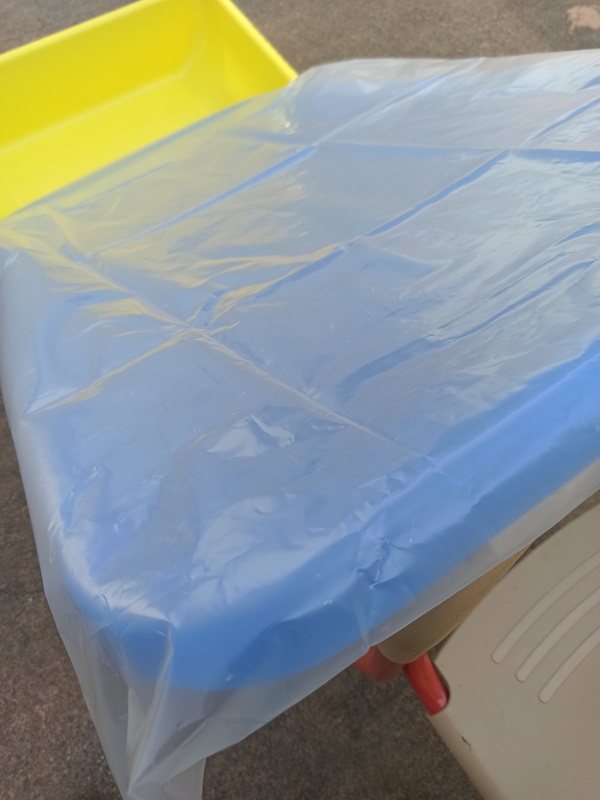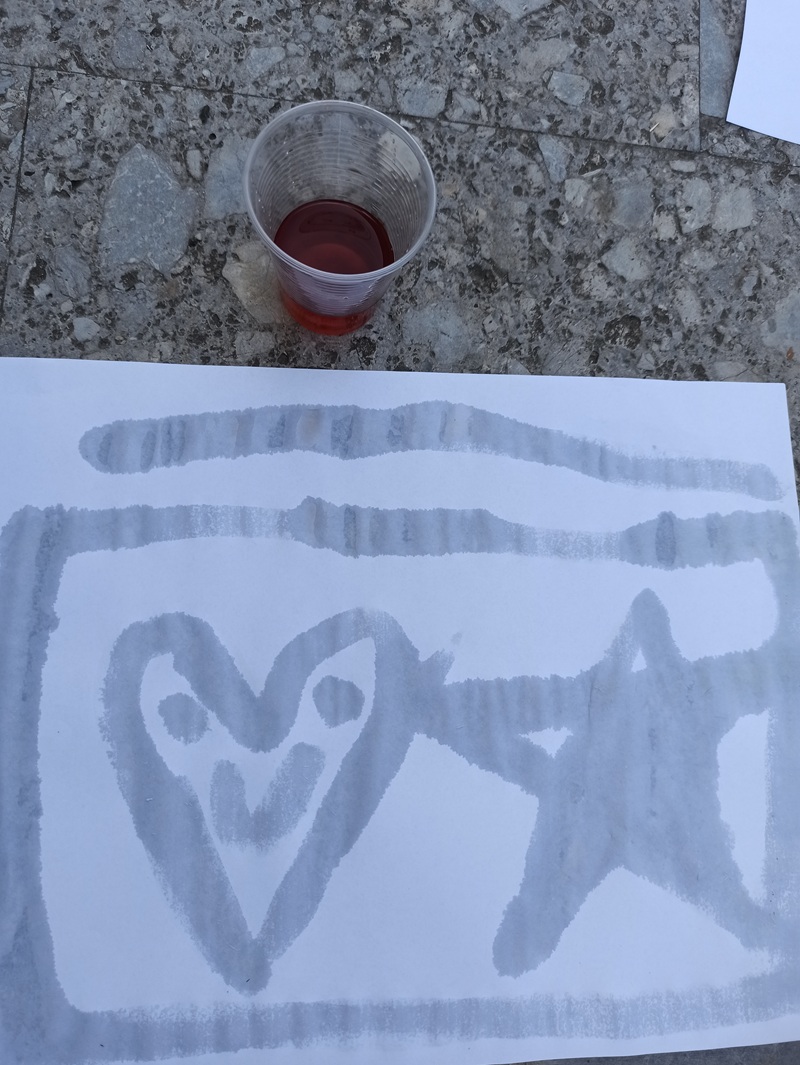Travasi Montessori with water, discover new tools and ways of use.

Explore freely materials and processes, promotes autonomy and concentration in children.
For this, at the end of the last school year, complice the climate that allows to work outdoors with the boys and girls of my section, I chose to carry out manipulative activities
that would allow us to experiment in ever new ways.
Travasi Montessori: the water as a protagonist in kindergarten.
Water is one of the elements most loved by boys and girls and often becomes a protagonist in activities at kindergarten.
However, when it is used unintentionally, it soon gives way to boredom.
Montessori skills help us in this, allowing us to create an informal but intentional learning environment
that does not create expectations about the product or the result and allows children to test themselves without pressure or expectation.
The process, in fact, does not want to lead to the creation of tables or elaborate with a pleasant appearance, but simply, allows you to experience in a personal and concrete way the material
Leading to discover the properties of the element water and, together, something new about themselves.
For our activities on Montessori transfers with water, we have used a whole series of easy to find tools
that have allowed us to play, observe and experiment, let’s discover them together with ever new ways of use.
Transfer and printing, using plastic bags.
For this activity you need plastic bags of small size, water and one or more jugs, tempera and A3 sheets.

The bag for its consistency is an unstable container and its use amuses very much children who using their hands in a new way
They soon find out how to handle it properly to avoid being without water.
The action of keeping the bag tightly closed, turning it over, shaking it, squeezing it, manipulating it and then letting some water flow
make it move upside-down, sometimes make it fall and empty, try to fill it with the jug or even just keep it open so that the teacher can fill it
are all very challenging and stimulating actions, which allow children to try new actions and movements.
Only after allowing children to play freely and experience all the physical characteristics of the water in the bag
You can suggest to them to handle it, holding it for a corner and use it to print with the tempera.

This part of the activity is completely different from the previous, in the first phase, it is the children who proceed according to their personal ways
while for printing it is useful to provide more precise instructions: hold the bag so that only one corner can touch the color and then the paper.
In reality, however, even this at the moment you can see the concretization of the experiment, with children using the bag differently and personal
Achieving very different and creative graphic results.

Game of speed with water and color droppers.
For this proposal it is necessary to create a setting that allows you to work on an inclined plane.

I used a chair and the lid of our tub but you can use anything we have available
Then you need two droppers, a plastic cloth on which to run the drops and cups to hold the colored water.
The game involves two children at a time and must therefore be proposed in parallel to other working angles
consists in dropping water with the dropper, to make a race or even, simply, to observe the drops falling along the plane.

I must say that for the children the competition seems to take second place, compared to the pleasure of experiencing and observing the effects of water on the inclined plane.
This says a lot about how some experiences for us adults are actually stimulating for children
Some of them, in fact, have returned again and again to the station, to repeat the activity.

Coloring with infusions at kindergarten: combine water and other materials.
Fruit infusions, as well as tea and coffee are excellent materials to use for Montessori activities such as outdoor painting.
These products offer, in addition to their liquid consistency, also a more or less intense color and an aroma that makes their use unusual, curious and pleasant for children.
The activity, to be carried out preferably outdoors, is useful to solicit the oculo-manual coordination and to stimulate the five senses in a completely spontaneous and natural way and
Gives children pleasant sensations.

To prepare the jug, in a good amount of water put several sachets of tea, one for each child, so that the color becomes intense and
that afterwards, everyone can have a sachet to use individually, to manipulate and paint.
The first part of the activity keeps children engaged in the discovery of the infusion: aroma, color, consistency, are put to the test and each with their own glass and brush
can begin to mix, smell, observe, it will also happen that someone colors on the ground and even on the skin.
Only after you have let them experiment, can you give them A3 sheets to use for painting with the infusion.

Here too the discovery is that the liquid, to the eye, has an intense color but on the sheet leaves traces soft and therefore reacts differently than the colors we usually use with children.
Once this interest is also exhausted, you can provide an additional sheet and remove the brushes, asking instead to use directly the sachets of infusion for painting.

Squeezing, creeping, dabbing, throwing, dripping, everyone finds a different use
Using the sachet in an original way and also trying new ways, perhaps already discovered and experimented by the companions.
Recovery containers for Montessori transfers with water.
When at home you use foods such as ricotta, cream cheese, mascarpone, yoghurt, sauces, honey, ice cream cups, vegetable trays and more
consider preserving their containers, to give them a second life, using them for Montessori transfers and manipulative activities.
I have a large stock and this allows me to provide the children of my section much material to be used simultaneously with several containers.
This brings two advantages: it avoids waiting times and discussions between the children and allows everyone to use what is necessary, freely and independently.
The more containers are available, the smoother and longer-lasting the activity.
In the case of water, have available cups, spoons, ladles, strainers as those present in the packaging of some cheeses, jars, milk bottles and sauces, caps, jugs, sponges
All different shapes and sizes
opens up to multiple experiments and allows you to use the movement in an increasingly precise and intentional way, prolonging the activity without boredom.
All these materials can be used in tanks of good capacity but if you do not have them available
You can easily make them available to children, in several small containers, such as bowls and trays or recovery containers.
You will go in this way to create one or more sensory tables, where it will be possible to insert also different elements to transfer:
Small objects, fun and refreshing popsicles prepared with water and some toys, shells, animals, dinosaurs or natural elements.
All these things will pass continuously from one hand to another, from one container to the other, from one child to the other, seamlessly and
will allow the development of attention, concentration and autonomy.
Montessori transfer activity with funnels and tubes.
For this type of activity it is necessary to use large tanks, with a good amount of water.
In addition to the elements already mentioned, a number of water-handling tools will be made available to children:
Funnels, hoses, channels, plastic bottles with the ends removed or cut in half to allow them to be turned into small channels.
The teacher’s imagination and the opportunity to recover different materials will do the rest.
I, for example, used the tubes left over after the installation of the air conditioners, which are easy to handle, soft and flexible and are very popular with children.

All these instruments make it possible to channel water and observe its various behaviour depending on how the pipes are used and tilted or on the size of the pipes and containers.
By experimenting children ask questions, seek answers, develop hypotheses and find solutions, discuss, observe, measure, quantify
Think about the phenomena and reactions they observe:
Capillarity, communicating vessels, volume, absorption, weight, transparency, are complex theoretical concepts, but they can be discovered and touched by hand, through the Montessori transfers.
All the Montessori transfers proposed with water are pleasant and stimulating but must be prepared taking into account also the important aspect of safety.
Especially in the presence of quantities of water of a certain consistency, children should never be left alone, either at home or at school
They must be carefully monitored and accompanied in their discoveries.
After this perhaps superfluous recommendation
I wish you good fun and write me if, when you propose these activities, some of your children should tell you: teacher you are the best in the world.
Designed by Freepik.


